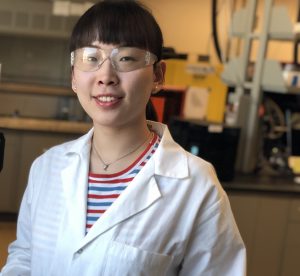
Improving the Bioactivity of Polymeric Bone Regenerative Scaffolds Through Physically and Chemically Incorporated Molecules
Segmental reconstruction of weight-bearing long bones is particularly challenging and can result in significant disability to patients. Although autografts and allografts are widely used in the clinic, the development of artificial bone graft substitutes (BGSs) continues to be an area of intense research. The advanced understanding of bone tissue microenvironment has directed the design of scaffold-based tissue engineering strategies in regenerative medicine. Particularly, bone tissue microenvironment composed of a hybrid matrix of hydroxyapatite nanocrystals and collagen fibers, a cellular phase of osteoblasts, osteoclasts, and osteocytes, and a signaling phase of osteogenic growth factors and/or cytokines. Therefore, to apply the concept of tissue engineering in bone tissue engineering, osteogenic growth factors and/or stem cells are incorporated into artificial scaffolds for improved osteoinductivity and conductivity in the development of BGSs. In our lab, BGSs based on E1001(1k), an intrinsically osteoconductive tyrosine-based polycarbonate, and beta-tricalcium phosphate (β-TCP) nanocrystals, were custom-fabricated (abbreviated as E1001(1k)/β-TCP scaffolds) and tested in various critical size calvarial models as carriers for rhBMP-2. In Chapter 2, the comparison of human-sized E1001(1k)/β-TCP scaffolds to a clinically used β-TCP-based BGS (i.e. chronOS®) with both constructs carrying the same dose of rhBMP-2 (281 ng/mm3) in a 30 mm critical size sheep tibia model was conducted. We found that quantitative histomorphometry analyses on the explants at 17 weeks showed no significant difference between the two treatment groups, indicating E1001(1k)/β-TCP scaffolds are as good as the clinically relevant chronOS® for tibial bone regeneration in sheep. More importantly, new bone regenerated in E1001(1k)/β-TCP scaffolds demonstrated a more physiological morphology, indicating ongoing bone remodeling into compact bone tissue. Our results show E1001(1k)/β-TCP scaffolds are promising BGS candidates for segmental bone regeneration in clinical trials.
A critical factor in mimicking bone microenvironment is the osteogenic growth factor, though rhBMP-2 being the most studied growth factor in the bone regeneration field, adverse effects associated with supraphysiological doses are reported. Therefore, it is necessary to establish a reliable in vitro–in vivo correlation to determine the proper dose as well as to evaluate the efficacy of the delivery system. To date, the various study design in the efforts to determine proper BMP-2 delivery in vitro leads to has precluded comparative analysis. Due to the aforementioned concerns, a systematic evaluation of experimental parameters of the most widely used in vitro rhBMP-2 activity assays is reported in Chapter 3. We found that each model cell line (i.e. W-20-17, MC3T3 and C2C12) has an optimal concentration range over which it is most sensitive to rhBMP-2 induction. In addition, a correlation between protein concentration (as measured by enzyme-linked immunosorbent assay) and protein activity (as measured by alkaline phosphatase induction from W-20-17 cells) was established. It was found that the expression system used to produce the rhBMP-2 had the most significant effect on its activity and stability in vitro.
Though E1001(1k)/β-TCP scaffolds have been successfully utilized as carriers of rhBMP-2 to assist in the healing process of critical size bone defects, the scaffold alone treatments typically demonstrate limited osteoconductivity in vivo due to the bio-inert nature of E1001(1k). In Chapter 4, E1001(1k) analog polymers were functionalized with catechol for enhanced bioactivity. Catechol being the bioinspired functional group that is responsible for mussel adhesion to wet rock surfaces, has triggered great interest in the tissue engineering field, owning to its unique redox chemistry, chelation capability with metal ions and reaction with proteins. It was found that the modified polymers were able to support mesenchymal stem cell, human osteoblast and MC3T3 cell growth. In addition, the surface anchoring catechol groups assist nano-sized silver deposition on the polymer surface by immersion-coating in silver nitrate solution, and the decorated surface has good antibacterial properties against Escherichia coli and Staphylococcus aureus.